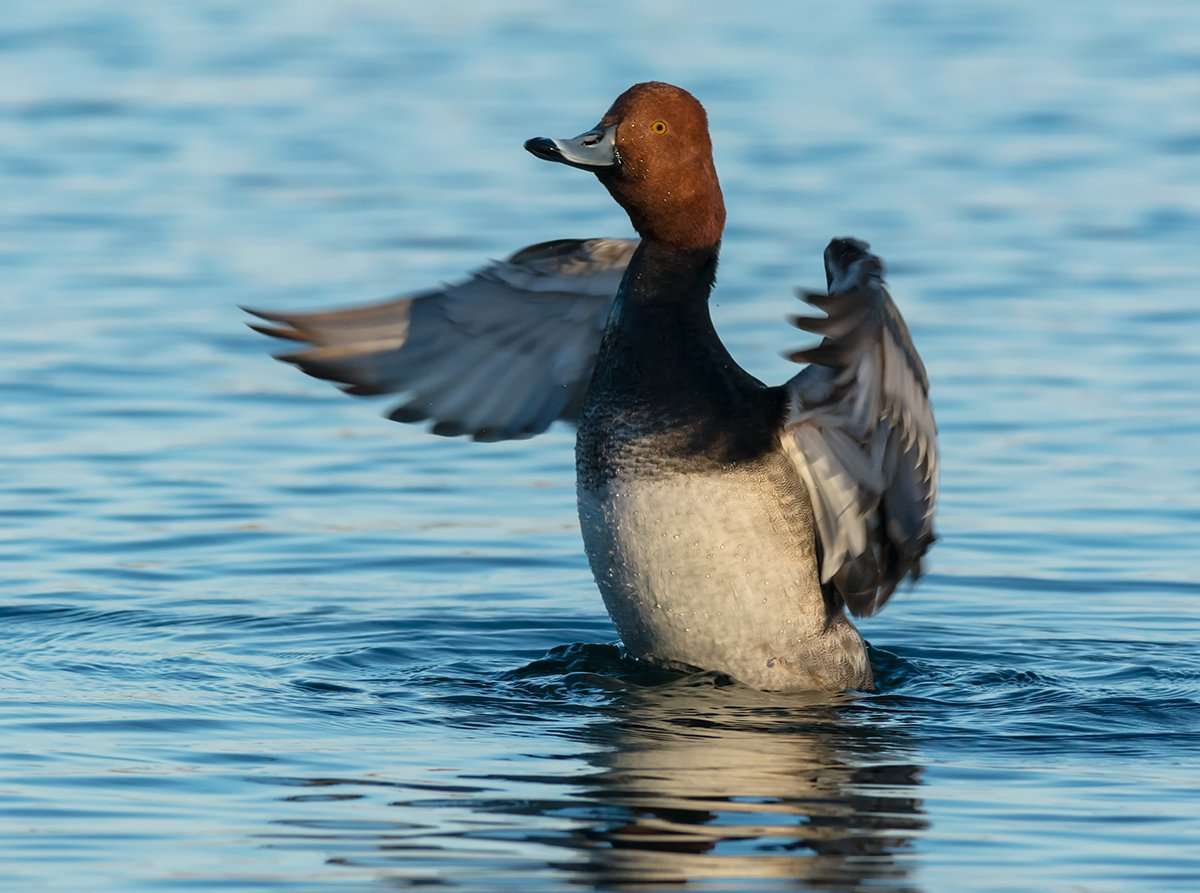Serious early-winter weather has ducks and geese on the move
Date: Dec. 22
Location: Maine to Florida, including West Virginia, western Pennsylvania and western New York.
Major Weather Trends
Warm weather has dominated much of the flyway for the entire season, although several major storms have helped bring water to regions enduring a prolonged drought.
The good news is that a major cold snap brought extreme cold to the Upper Midwest, Midwest and New England. Smaller waters froze in those areas, pushing at least more ducks into the mid-Atlantic and South. Temperatures dipped into the low 20s as far south as North Carolina, and even Atlanta saw lows in the mid- to low 20s.
Water and Habitat Conditions
Generally, habitat conditions are good, thanks to several storms that filled dry swamps and raised water levels in mid-Atlantic reservoirs. Some areas — including part of New England, northwestern Georgia and western South Carolina — are still suffering from a prolonged drought, and swamps and farm ponds are still low or even dry. Even some ponds in Maryland have yet to recover from the summer dry spell.
Corn has been harvested just about everywhere, and many fields are now planted with winter wheat.

Species and Numbers
In typical Atlantic Flyway fashion, reports are good and bad, depending on where you are. Some hunters are seeing lots of birds, but others are seeing only marginal or even poor numbers.
New York Ducks Unlimited chairman Paul Brody was still seeing some wood ducks in early December, a sure sign of a relatively mild autumn. However, he has been watching an increasing number of mallards show up in southern New York.
There are a lot of Canada geese in some areas, too, he said.
Avery Outdoors pro staff member Kenny Gray said things are looking promising on Maryland's Eastern Shore. The past couple of weeks have seen a good push of Canada geese and puddle ducks, including mallards, pintails, gadwall and black ducks.
We hunted Thanksgiving weekend, and we had a bunch of teal buzzing our decoys, he said. There are some still around, so I think we are going to have a pretty good season as soon as it reopens.
Diver numbers are also increasing. Gray is hearing reports of huge flocks of bluebills and other species near Kent Island, although sea duck numbers are still fairly low.
They usually don't show up until a little later, he said.
Reports are still spotty farther south, where hunters in Virginia and North and South Carolina anxiously await bigger things. Lots of hunters are still seeing wood ducks, but Wild Wings Adventures outfitter Culley Wilson is starting to see a good push of big ducks in eastern North Carolina.
Our swans are just now showing up, he said. They are about three weeks late, but we are also seeing an increase in the number of pintails, mallards and other big ducks in the area. Guys with flooded impoundments are going to have a very good opener, and lots of others should do well if they are in the right spots.
Wood ducks are still the primary species in much of South Carolina and Georgia, particularly inland. However, a lack of water is keeping ducks ganged up in places with abundant food and habitat. Coastal Georgia hunters are seeing a slight increase in divers, but there still aren't enough to get too excited about.
The blast of Arctic air likely brought some new ducks from the north, but where they end up will depend on the available habitat.
Personal Hunting Report
I traveled to the famed gunning grounds near Havre de Grace, Maryland, for the opener of that state's third split to hunt with friends from Ducks Unlimited. Eight of us shot 37 ducks and 13 geese in about five hours. We should have killed limits, but it was extremely cold, and we were body-booting, a technique that involves wearing full-body dry-suits while standing belly-deep in water. It was difficult to shoot well while wearing so many clothes in addition to the dry suit. It was one of my most memorable hunts.
Boat Ramp Chatter
As expected, the second split in much of the flyway was marginal, thanks mostly to mild weather throughout the eastern United States. Wood ducks remained the most abundant bird for lots of hunters, but some managed to scratch down a few big ducks here and there.
Avery pro staffer Steve Sullivan, who lives near the Canadian border in northern New York, reported a good year for ducks and geese until things froze up recently.
Various scouting reports are showing differing levels of enthusiasm. Some hunters are seeing increasing numbers of ducks, but others are still seeing just a few.
Upcoming Patterns and Predictions
How well the rest of the season goes is largely dependent on weather patterns — typical of the Atlantic Flyway. Past years have been marginal, at best, thanks largely to warmer winters and a lack of ice to the North. Northern New York is already under a blanket of snow, and much of the water is already iced in, so we might have an above-average year. Although that doesn't necessarily mean anything to those of us to the south, the cold snap at least hinted at what should be a better season.
Click here for more Realtree waterfowl hunting content. And check us out on Facebook.







